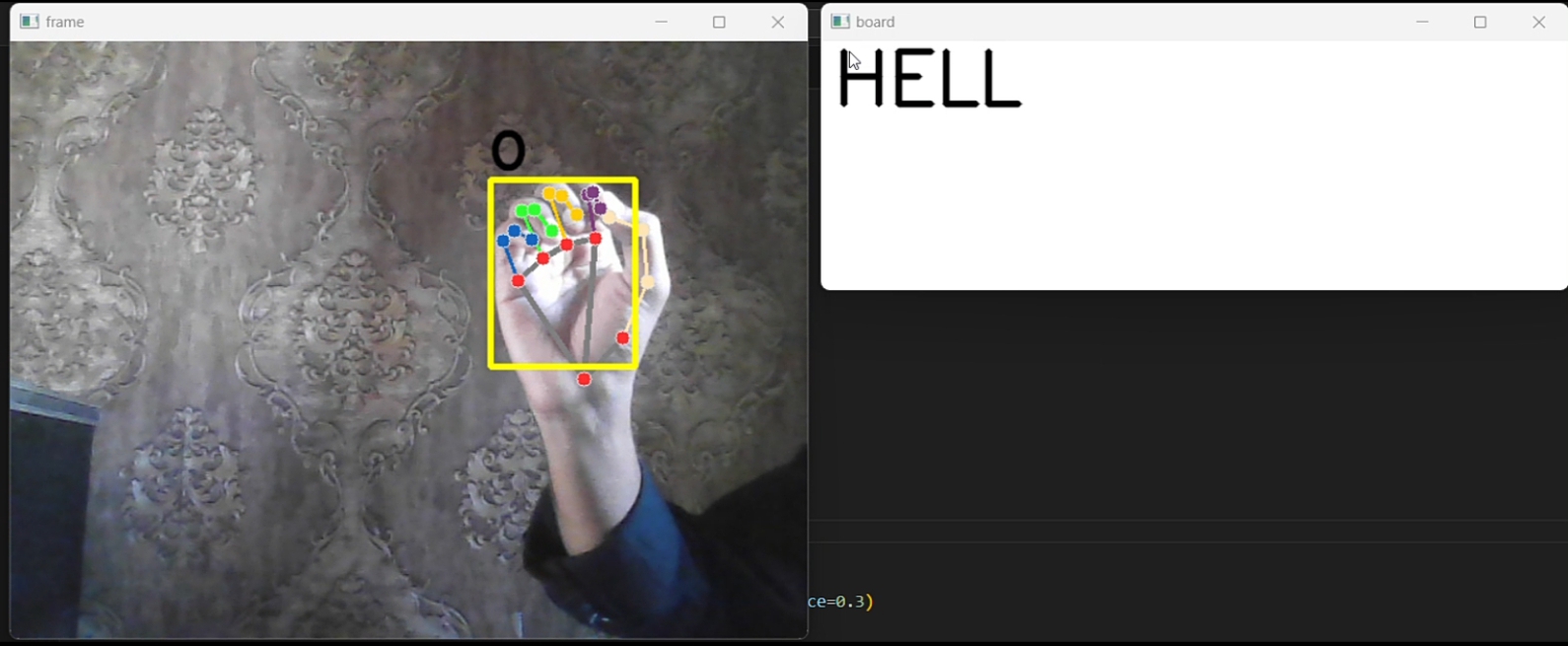Title
𝐑𝐞𝐯𝐞𝐚𝐥𝐢𝐧𝐠 𝐭𝐡𝐞 𝐏𝐨𝐰𝐞𝐫 𝐨𝐟 𝐒𝐢𝐠𝐧 𝐋𝐚𝐧𝐠𝐮𝐚𝐠𝐞 𝐃𝐞𝐭𝐞𝐜𝐭𝐢𝐨𝐧 𝐰𝐢𝐭𝐡 𝐌𝐚𝐜𝐡𝐢𝐧𝐞 𝐋𝐞𝐚𝐫𝐧𝐢𝐧𝐠!🤖✋
Introduction
Today, I made significant progress by implementing a sign language detection system! Utilizing 𝑴𝒆𝒅𝒊𝒂𝒑𝒊𝒑𝒆 for hand tracking and 𝑹𝒂𝒏𝒅𝒐𝒎 𝑭𝒐𝒓𝒆𝒔𝒕 𝑪𝒍𝒂𝒔𝒔𝒊𝒇𝒊𝒆𝒓 for predictions, I built a real-time application that interprets sign language gestures and displays recognized characters. This technology has the potential to enhance communication accessibility and facilitate interactions in various domains.
🟢 𝐊𝐞𝐲 𝐇𝐢𝐠𝐡𝐥𝐢𝐠𝐡𝐭𝐬:
• 🔍 𝐒𝐢𝐠𝐧 𝐋𝐚𝐧𝐠𝐮𝐚𝐠𝐞 𝐑𝐞𝐜𝐨𝐠𝐧𝐢𝐭𝐢𝐨𝐧: Leveraged Mediapipe to detect hand landmarks, allowing the model to accurately interpret sign language gestures in real-time.
• 📷 𝐑𝐞𝐚𝐥-𝐓𝐢𝐦𝐞 𝐃𝐚𝐭𝐚 𝐂𝐨𝐥𝐥𝐞𝐜𝐭𝐢𝐨𝐧: Implemented a process to collect gesture data in real-time, capturing images to create a robust dataset for training the model.
• 📊 𝐌𝐨𝐝𝐞𝐥 𝐓𝐫𝐚𝐢𝐧𝐢𝐧𝐠: Trained a Random Forest Classifier on the collected dataset, achieving impressive accuracy in recognizing sign language gestures.
• 📽️ 𝐈𝐧𝐬𝐭𝐚𝐧𝐭 𝐅𝐞𝐞𝐝𝐛𝐚𝐜𝐤: Integrated webcam input to provide immediate predictions, enhancing user engagement and interaction.
🔍 𝐖𝐡𝐚𝐭 𝐈 𝐋𝐞𝐚𝐫𝐧𝐞𝐝:
• Combining computer vision with machine learning opens up exciting possibilities for intuitive communication tools and accessibility solutions.
• Stability in predictions is crucial for user trust; implementing thresholds for consistent recognition significantly improves performance.
• Efficiently handling real-time video data requires careful attention to processing efficiency and error management to maintain a smooth user experience.
🚀 𝐖𝐡𝐚𝐭’𝐬 𝐍𝐞𝐱𝐭:
• Explore further improvements in sign language recognition accuracy under varying lighting conditions and angles.
• Investigate expanding the gesture set to include more complex signs for enhanced functionality.
Conclusion:
By combining computer vision techniques like Mediapipe with machine learning models such as the Random Forest Classifier, this project demonstrates significant advancements in real-time sign language detection. The accurate interpretation of hand gestures holds tremendous potential for improving accessibility and communication across various domains. Future work will focus on refining gesture recognition under diverse conditions and expanding the set of detectable signs to enhance functionality further. This research contributes to the growing field of AI-driven communication technologies, opening new avenues for accessibility and interaction.
Feel free to check out my work on GitHub: GitHub Link and connect with me on LinkedIn: LinkedIn Link. Let's connect and collaborate!
